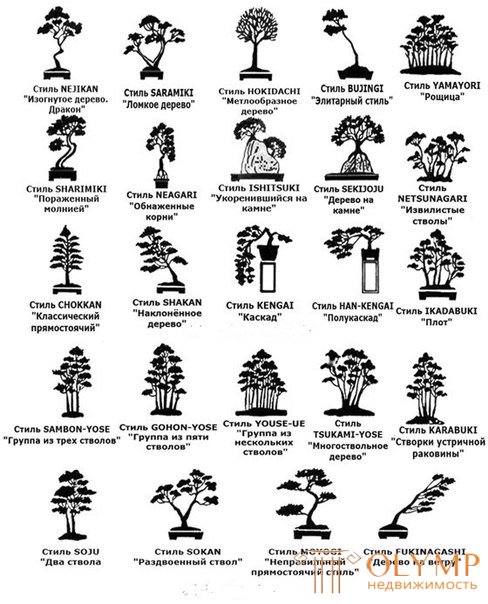
The systematization of bonsai types was made by Japanese designers, so Japanese names are used in the classification.

Chokkan is a symmetrical vertical form: a straight, vertical cone-shaped trunk, evenly covered with branches.
Mayogi - asymmetrical vertical form: a cone-shaped trunk with a slight inclination to the base and a maximum of 3 small bends, evenly covered with branches.
Shakan is an oblique form: an oblique trunk, the top and root system of which is directed in the opposite direction than the base of the trunk, a strong root system.
Fuchinaghashi - wind-bent form: a slanted trunk, especially at the apex, with branches directed in the direction of inclination.
Hokidachi - fan-shaped form: a straight trunk, branching in the form of a fan.
Kengai - hanging or cascading form: curved stem and branches hanging down over the edge of the vessel.
Khan-Kengai is a semi-hanging or semi-cascade shape: the trunk and branches are horizontal with respect to the edge of the vessel.
Isitsuki - rock form (bonsai on the stone): the roots of the plant cover the stone, located in the ground.
Sokan - twin or forked form: 2 trunks, different in height and power, growing from one root.
Sancan - triple form.
Kabudachi - multi-stemmed form: plants with many trunks of various thickness, resembling shrubs. The number of stems must be odd.
Yose-Yu - forest composition: many trees of different size and age in one vessel.
Ikadabuki - raft: a trunk lying on or in the ground with vertical branches growing upwards. The plant is like a forest composition of several trees.
Что бы оставить комментарий войдите
Комментарии (0)